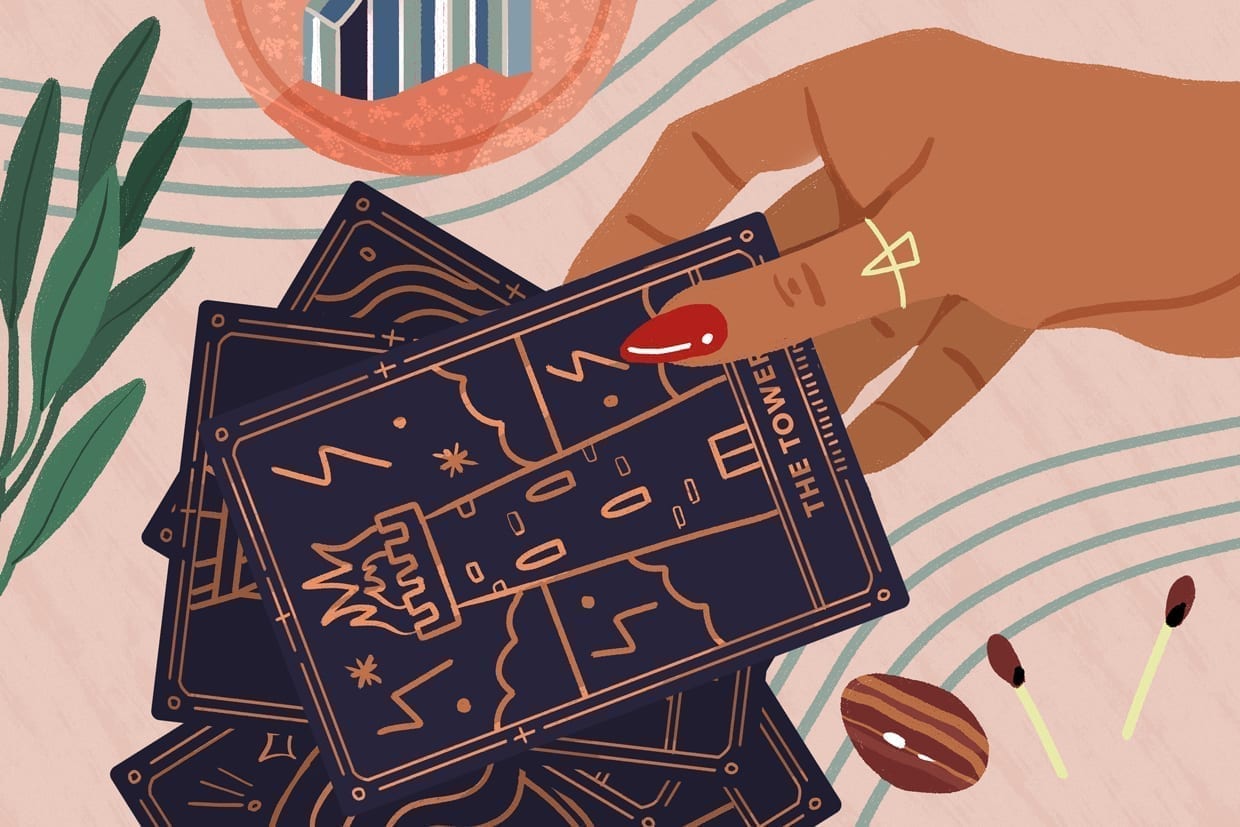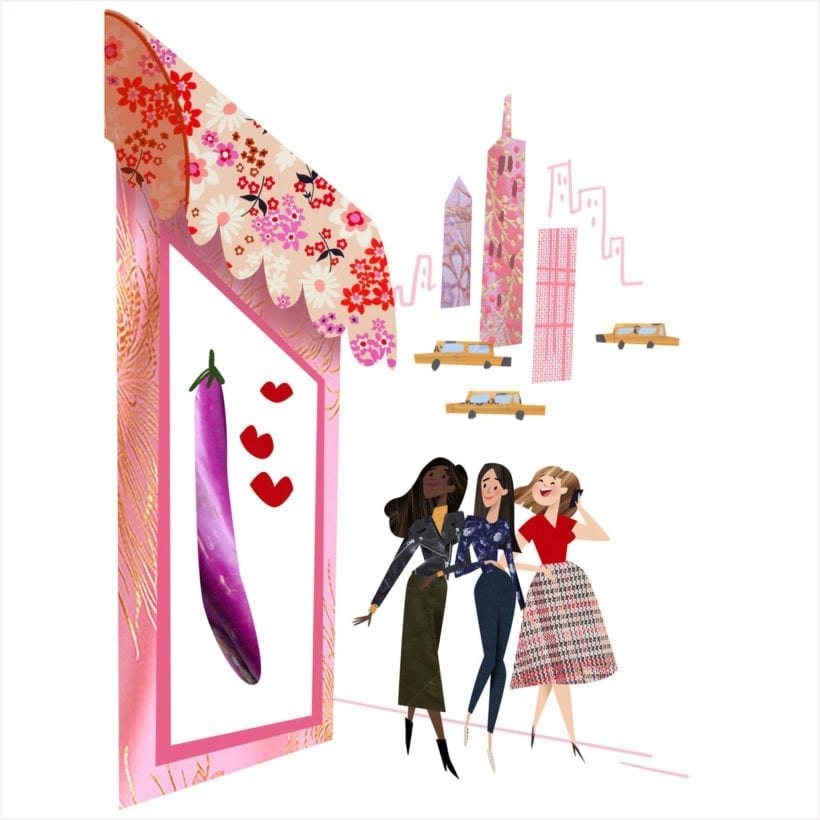While many associate tarot cards with the circus and fortune-tellers, there is much more to a deck — especially when it comes to modern self-care practices and how those themes can provide guidance when caring for yourself.
“The Tarot is a deck of 78 cards that each tell a story,” explains Meena Zia, Vedic Astrologer, tarot reader and founder of Your Soul Warrior. “There are 22 Major Arcana cards which symbolize big life themes and 56 Minor Arcana cards which symbolize challenges in daily life or on a smaller scale,” she adds.
Tarot
gives us a beautiful opportunity to receive information you need for what you
are going through.
Upon its introduction, Tarot was essentially a card game (fun fact: the Minor Arcana cards are made up of 56 cards from four suits — just like traditional playing cards). However, its use has ebbed and flowed over the centuries. “They’ve always been appropriated for divinatory purposes,” explains Jerico Mandybur, spiritual coach, speaker and author of NEO Tarot: A Fresh Approach to Self-Care, Healing & Empowerment. “Contemporarily, they’re used for self-knowledge and empowerment as much as for fortune-telling. I see them as both — a self-care tool and a divinatory aid, depending on the user’s intentions,” she adds.
Tarot and Self-Care
Self-care can be found in every corner of our lives — which is why the tarot deck is an excellent place to look for inspiration. “Tarot gives us a beautiful opportunity to receive information you need for what you are going through,” says Zia. “I truly believe that ultimate self-care is being able to look inside yourself and transmute the qualities [or] habits that hold you back.”
Using tarot cards for self-care can vary depending on how many cards and how often you pull. To keep it simple, you can start by pulling a card once a day or once a week and using its overall theme to help guide you and inspire self-care rituals. To get a little more in-depth and take a closer look at your self-care plan, you might want to try a self-care pyramid, outlined in Mandybur’s book.
To create a self-care pyramid, draw six cards and arrange them in the form of a pyramid (three on the bottom, two in the middle, and one on top). The top card represents where your mind is currently at, the second (middle left) represents a self-care strategy worth trying, the third (middle right) represents what might be getting in your way, the fourth (bottom left) is all about how to address what is interfering, the fifth (bottom middle) explains how addressing it might help, and the sixth shows you how you might thrive from your self-care strategy.
Tarot Cards to Inspired Your Self-Care Practice
According to Mandybur, all tarot cards can aid self-care. “None are more or less suitable for self-care than any others,” she remarks. “All are filled with powerful archetypes and centuries-old wisdom. Whatever card you get when asking about self-care is perfect for you at that moment,” she adds. However, there are a few worth noting, starting with The Tower, or what Zia calls “the ultimate symbol of self-care.”
The Tower
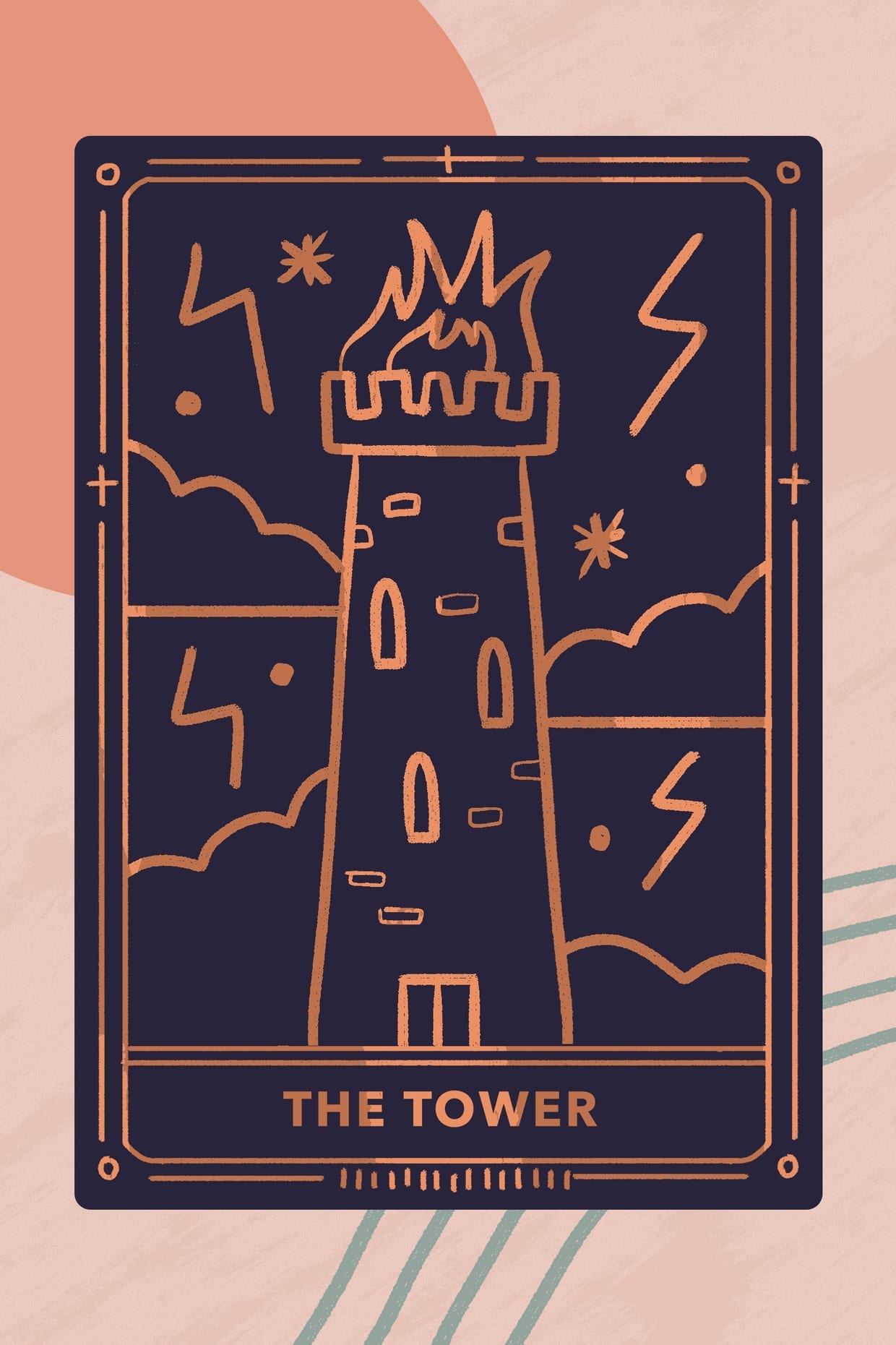
In life, some of the best forms of self-care come from growing and expanding ourselves — despite how trying the process to get there might be. “The Tower appears when your world is about to be rocked and is not the most exciting thing to see, especially in your future, but know that this means change and growth is coming,” says Zia. “The worst thing you can do is hold on to something or continue on with something that is blocking you from your potential,” she adds.
Self-Care Ritual: The Tower is all about growing through what you go through and, while its tough love might help you flourish into a new you, the growing pains can be difficult. According to Mandybur, hugging or snuggling a loved one in order to feel supported and held up is just what the (tarot) doctor ordered.
The Empress
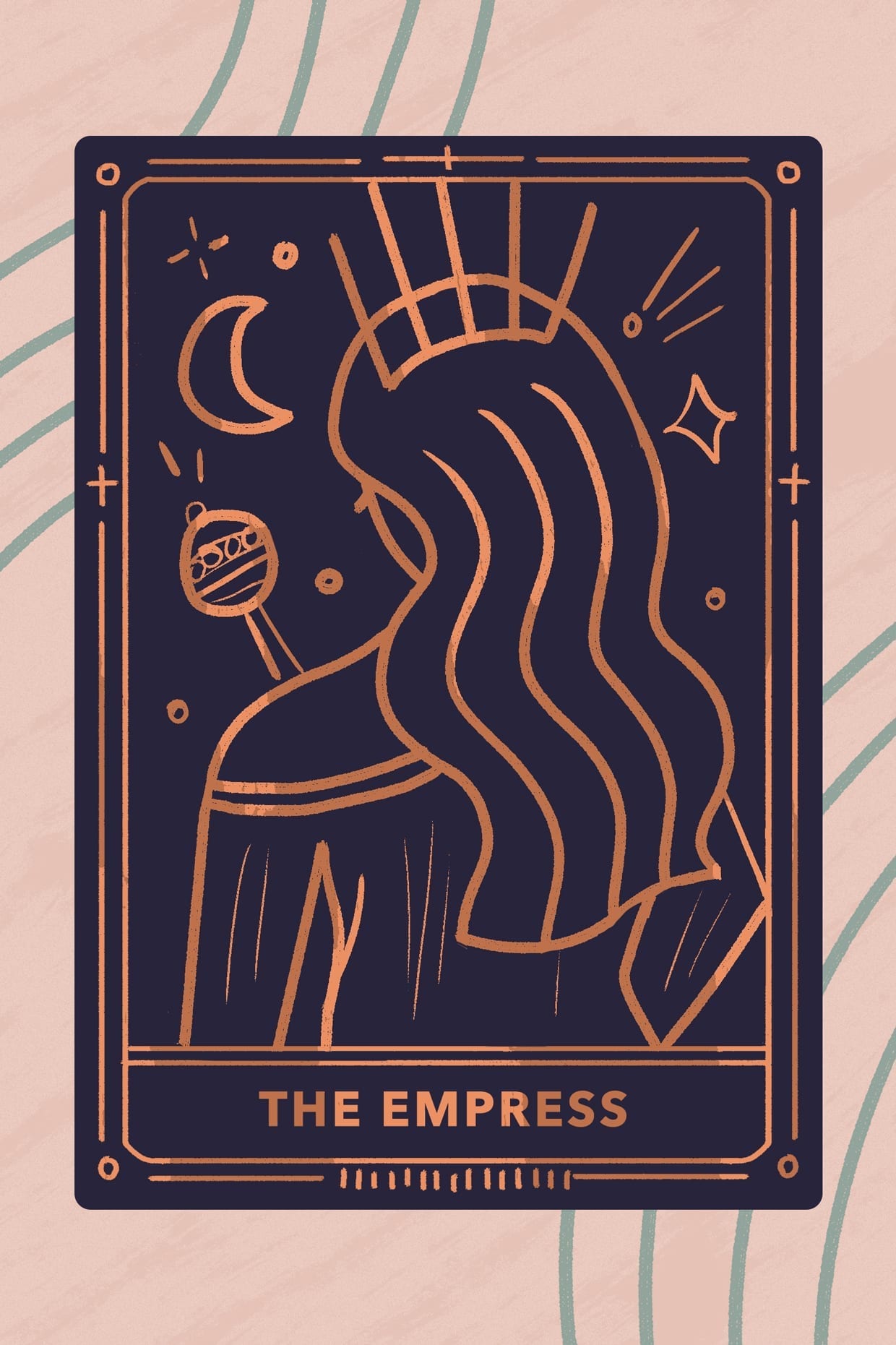
This is another one of Zia’s favorite cards to inspire self-care. “The Empress is a classic — she represents the Divine feminine and invites you to embrace who you are and get back to your natural self,” she notes.
Self-Care Ritual: In addition to the Divine feminine, The Empress also represents creative energy, which is why Mandybur recommends spending 20-minutes on an at-home manicure. Tending to your nailbeds and cuticles with a little glossy paint can spark creativity while practicing a little self-love.
The High Priestess
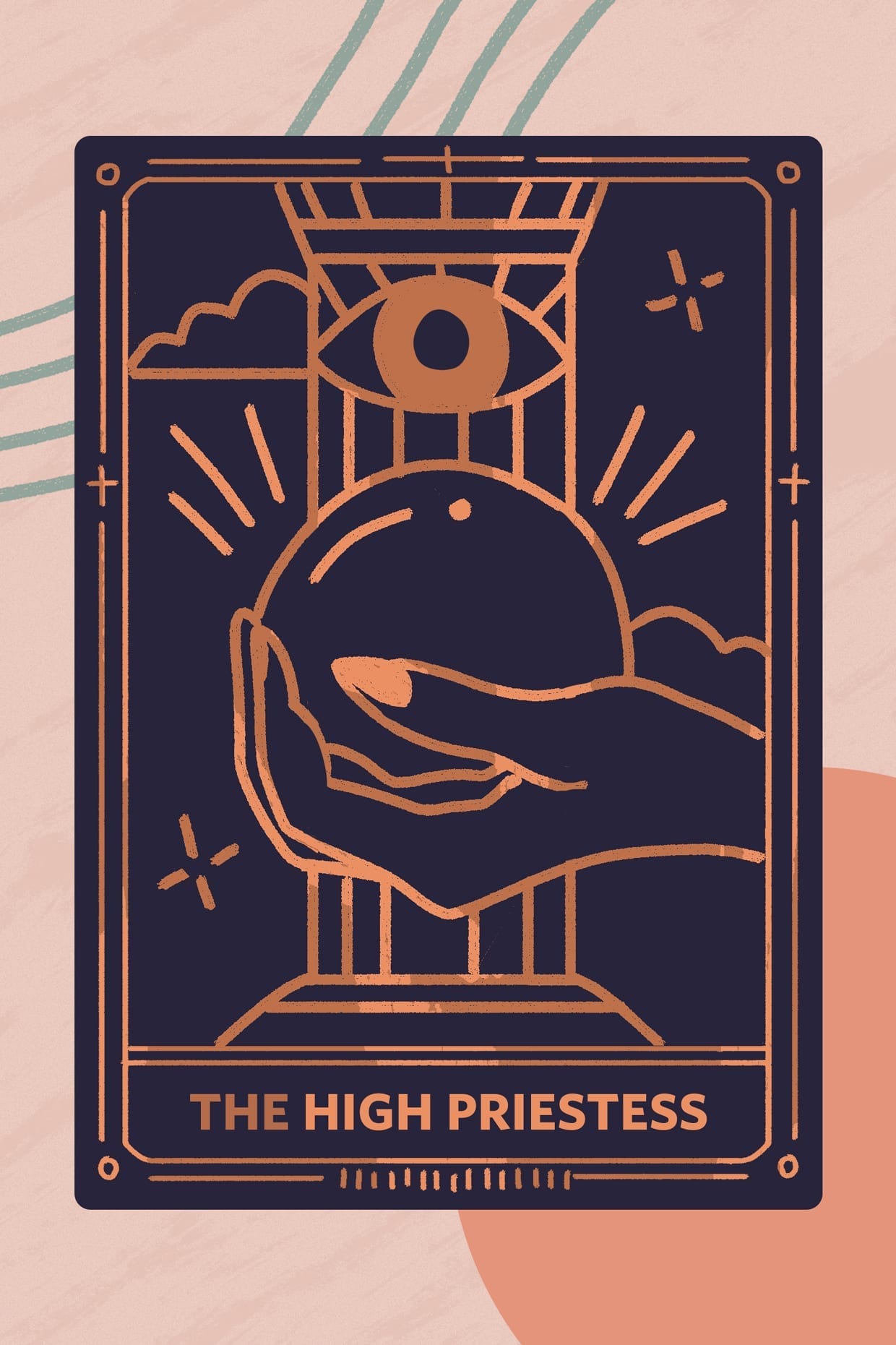
We can all learn from The High Priestess card as “she represents trusting your gut and knowing that things are going to work out,” says Zia. In other words: Let it go and let your inner wisdom guide you.
Self-Care Ritual: To draw inspiration from The High Priestess in self-care, Mandybur recommends planting yourself near a body of water — whether that be the ocean, a lake, or a swimming pool — and gazing into it to achieve a sense of serenity. And, the next time worry strikes, think back to that serenity and remember that things will work out.
The Star
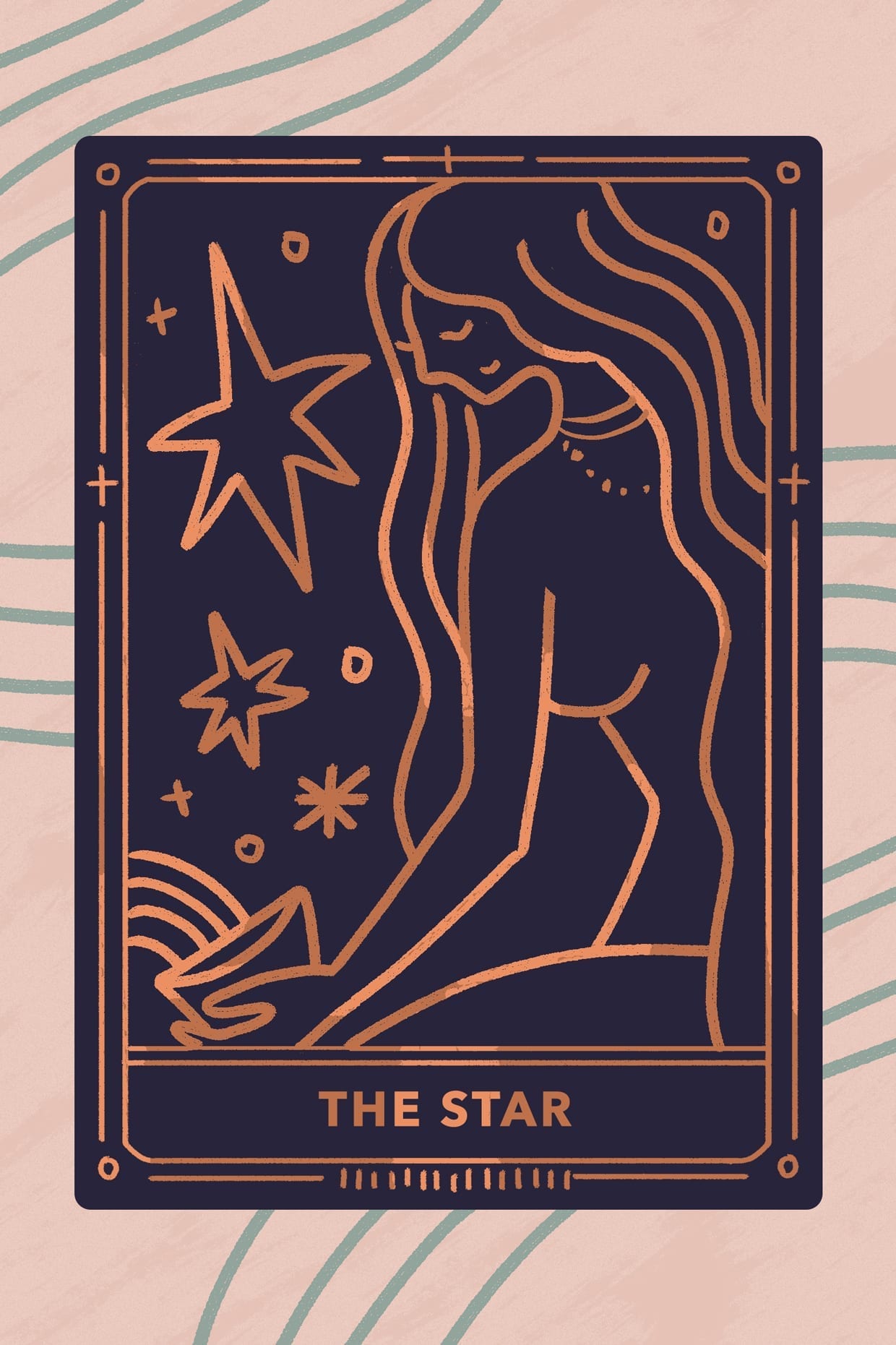
Rising above whatever is dimming our light is another form of self-care. “The star is the phoenix that rises from the ashes,” says Zia. “[It] shows you that you are a brilliant and magnificent soul who needs to let your light be seen,” she adds.
Self-Care Ritual: In Mandybur’s book, she describes The Star as a card that represents rejuvenation, which means a deep cleansing bath and at-home sugar scrub to slough away dead skin cells (which can be a metaphor for others’ negativity and past pain) and give the skin a fresh start is a perfect ritual for this theme.
We only recommend products we have independently researched, tested, and loved. If you purchase a product found through our links, Sunday Edit may earn an affiliate commission.
